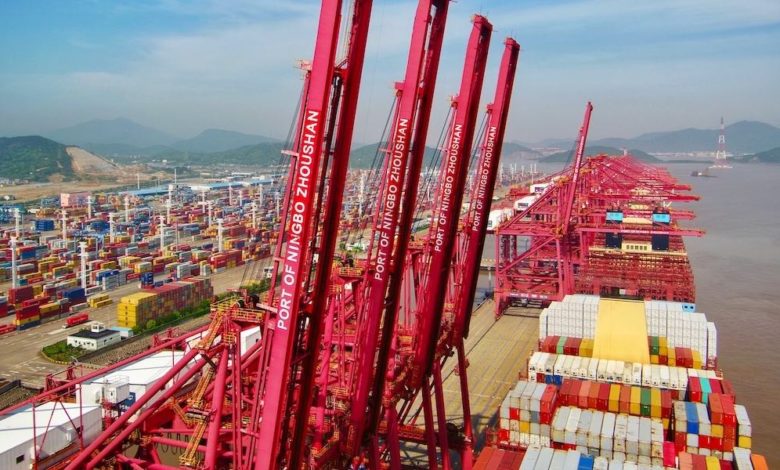Ships divert from Ningbo with no timeframe given for terminal to reopen

Having learnt lessons from the closure of Yantian Port earlier in the summer, a number of carriers are not hanging around waiting for Ningbo Meishan Island Container Terminal to open anytime soon, with several ships opting to skip Ningbo this week.
One port worker at the terminal was found to have contracted Covid-19 yesterday, resulting in the terminal being closed. Tests on the port’s workforce are underway, and the terminal is being decontaminated. For all other Ningbo terminals, the gate-in of export containers is now limited to two days of a vessel’s expected time of arrival.
“It seems the whole Meishan terminal is closed until further notice. All the shipping agents are running around trying to change to Shanghai,” one well placed source told Splash today.
There has been no official announcement yet on how long the terminal will be closed. The outbreak at Yantian in eastern Shenzhen in late May resulted in a partial lockdown lasting four weeks.
All the shipping agents are running around trying to change to Shanghai
The sheer enormity of Ningbo-Zhoushan port, the world’s largest port in tonnage terms, appears to have helped prevent a wider total port lockdown.
Meishan Island is approximately 30 km away from Ningbo’s major container terminal at Beilun, and 60 km away from Ningbo downtown.
Meishan accounts for approximately 20% of the near 30m teu that pass through the port each year. There are currently a total of 41 container services calling Meishan, eight into North America, six for Europe, and two for the Red Sea. The Meishan closure mainly impacts the Ocean Alliance, a grouping made up of Cosco, OOCL, CMA CGM and Evergreen.
Cosco and CMA CGM have already indicated that a number of ships will skip Ningbo this week.
“With this sudden suspension, we expect a delay in planned sailings,” Hapag-Lloyd stated in a note to clients yesterday.
The Covid closure comes at a time where both Ningbo and Shanghai had been experiencing severe congestion, the worst in the world, over the past two weeks. Data provided by MarineTraffic today (see map below, dots represent ships at anchor) shows the unprecedented volume of ships waiting for berth space to open up at Ningbo today.
All liners will face indirect ripples from this
“The liner companies organised in the Ocean Alliance are the main users of the Meishan terminal and will be directly affected, but all others will face indirect ripples from this. Important lessons were learned from Yantian, and to some extent the Suez Canal blockage, and they will all be put to work now,” commented Peter Sand, chief shipping analyst at BIMCO.
Sand went on to warn that further Covid-19-related port disruptions in China ought to be expected in the coming month, further sending skyrocketing container freight rates higher.
The World Container Index, published today by Drewry, climbed another $50 higher into record territory. The composite global index shows it now costs $9,421 to move an feu, more than four times the price tracked by Drewry a year ago.
Ningbo is also a large port for oil tankers and dry bulkers discharging in China.
“They could see support to freight rates from increased congestion,” Sand suggested.

